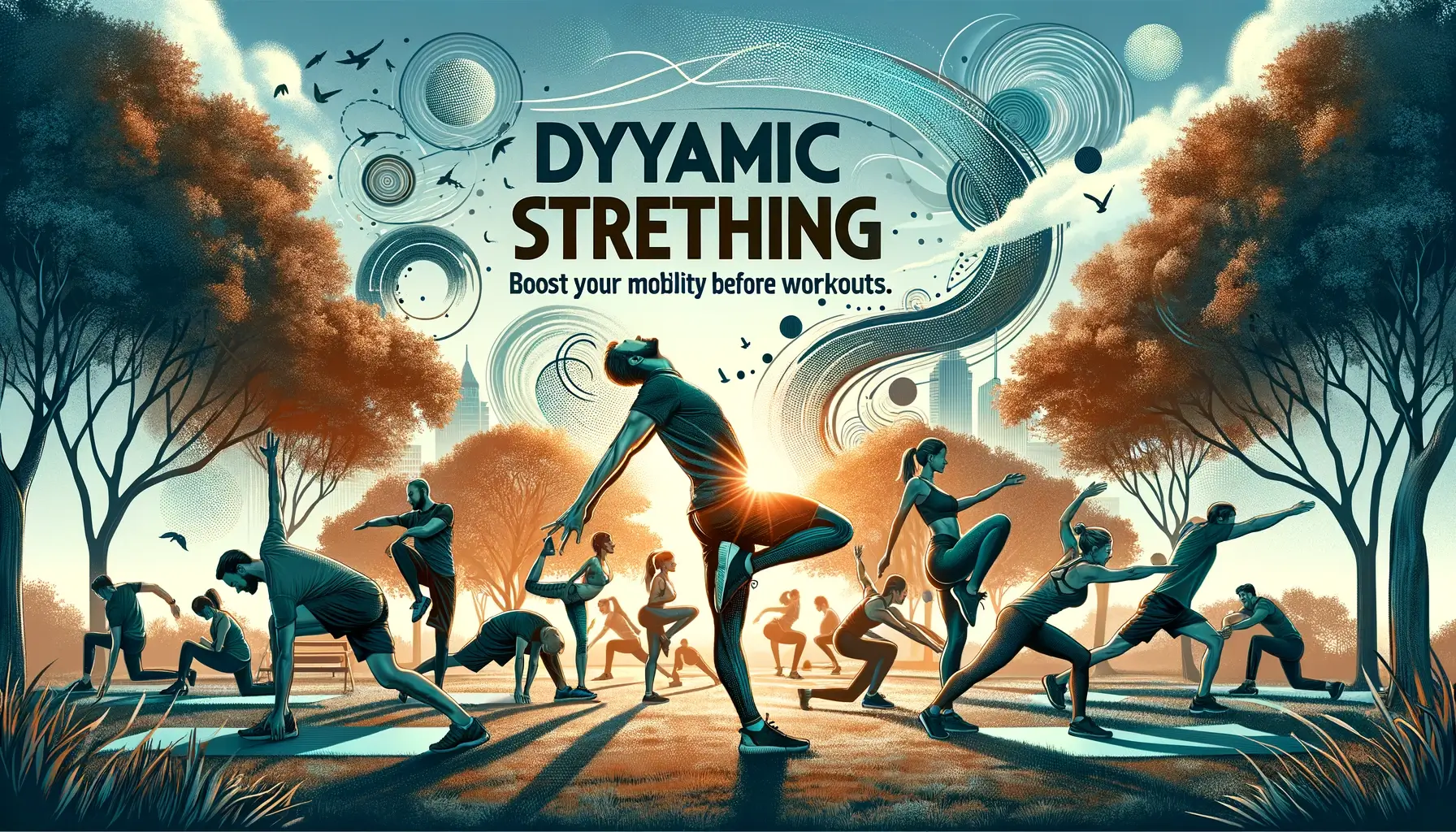Most athletes understand the importance of dynamic stretching before engaging in physical activities. This type of stretching involves active movements that mimic the motions of the sport or exercise about to be performed. By incorporating dynamic stretching into your pre-workout routine, you can increase blood flow to muscles, improve flexibility, and reduce the risk of injury during your workout. This blog post will explore the benefits of dynamic stretching and provide examples of dynamic stretches that you can incorporate into your fitness routine.
The Mechanisms of Dynamic Stretching
Some may wonder how dynamic stretching can boost mobility and enhance performance. Understanding the mechanisms behind dynamic stretching can shed light on its effectiveness.
Muscle Elasticity and Plasticity
Stretching plays a crucial role in improving muscle elasticity and plasticity. By moving through dynamic stretches, the muscles are able to increase their range of motion and adapt to different movement patterns. This leads to improved flexibility and reduced risk of injury during workouts.
Dynamic stretching helps to warm up the muscles and prepare them for the upcoming physical activity, making them more responsive and ready to perform at their best.

Neuromuscular Activation
To maximize performance, neuromuscular activation is key. Dynamic stretching involves engaging both the muscles and the nervous system through continuous movement. This not only increases blood flow to the muscles but also enhances the communication between the muscles and the brain.
Elasticity Through dynamic stretching, the nervous system becomes primed for action, leading to improved coordination and efficiency during workouts.
Techniques and Applications
Upper Body Dynamic Stretches
Not only do upper body dynamic stretches help in increasing flexibility, they also improve blood circulation and warm up the muscles before a workout. Dynamic arm swings, shoulder circles, and wrist circles are some effective stretches that can be incorporated into your pre-workout routine to prepare the upper body for exercise.
With regular practice of upper body dynamic stretches, you can enhance your range of motion and prevent injuries during intense workouts. These stretches engage the muscles and joints, improving their elasticity and responsiveness, ultimately leading to better performance in your fitness activities.
Lower Body Dynamic Stretches
Stretches like leg swings, hip circles, and lunges with a twist are necessary for warming up the lower body muscles and joints. These dynamic stretches help in improving flexibility, balance, and agility, enabling you to move more efficiently and effectively during your workout.
To maximize the benefits of lower body dynamic stretches, it is important to perform them in a controlled manner and gradually increase the intensity as your muscles warm up. These stretches can be tailored to target specific muscle groups based on the type of workout you are planning to do, ensuring that you are adequately prepared for the physical demands ahead.
Dynamic Stretching vs. Static Stretching
Your flexibility and mobility play a crucial role in your overall workout performance. Pertaining to preparing your muscles for exercise, the debate between dynamic stretching and static stretching has been ongoing. Understanding the differences between the two methods can help you make the best choice for your pre-workout routine.
Comparative Analysis
Dynamic stretching involves active movements that mimic the exercise you’re about to perform, helping increase blood flow and body temperature in preparation for physical activity.
On the other hand, static stretching involves holding a stretch for a prolonged period, which can relax the muscle and improve flexibility but may temporarily reduce muscle activation.
Integrating Both Methods for Optimal Performance
Stretching before a workout is vital for preventing injuries and improving performance. By combining dynamic stretching to prepare the body and static stretching to improve flexibility, you can optimize your overall workout experience. Incorporating both methods into your routine can help you achieve the best of both worlds.
Methods like dynamic stretching and static stretching can complement each other to maximize your mobility and reduce the risk of injury during exercise. It’s important to find the right balance between the two techniques to ensure you get the most out of your workout while keeping your muscles safe and healthy.

Dynamic Stretching in Different Disciplines
Sports-Specific Dynamic Stretching
Despite the variations in training and requirements across different sports disciplines, dynamic stretching is a common practice among athletes to improve performance and prevent injuries. An crucial component of sports-specific dynamic stretching is targeting the muscle groups and movements specific to the particular sport.
An example of sports-specific dynamic stretching is the high knees exercise, often favored by soccer players. This dynamic stretch helps in increasing hip flexibility and strengthening the lower body muscles needed for swift movements on the field.
Dynamic Stretching for the General Population
Stretching before a workout is crucial for the general population to enhance flexibility and reduce the risk of muscle strain. Stretching in motion, as in dynamic stretching, is increasingly recommended over static stretching for its ability to prepare the body for movement and improve overall performance.
To fully benefit from dynamic stretching, it is important to perform a variety of movements that mimic the activity you are about to engage in. This helps to prevent sudden strains and provide an optimal warm-up for the body.
Final Words
Following this dynamic stretching routine can significantly improve your mobility and flexibility before workouts, ultimately helping you to perform better and reduce the risk of injury. By incorporating dynamic stretches into your warm-up routine, you are preparing your body for the physical demands of exercise and priming your muscles for optimal performance. Remember to stay consistent with your stretching routine and listen to your body to ensure that you are giving yourself the best chance for success in your workouts. Embrace the power of dynamic stretching and unlock your full potential in every workout.
FAQ
Q: What is dynamic stretching?
A: Dynamic stretching is a form of stretching that involves continuous movement patterns that mimic the motions of the workout or sport you are about to perform. It helps to increase blood flow, muscle temperature, and joint flexibility.
Q: How does dynamic stretching differ from static stretching?
A: While static stretching involves holding a stretch for a prolonged period without movement, dynamic stretching incorporates movement to stretch muscles and joints through their full range of motion. Dynamic stretching is more beneficial before workouts as it helps prepare the body for physical activity.
Q: Why is dynamic stretching important before workouts?
A: Dynamic stretching helps improve your range of motion, mobility, and flexibility, which are crucial for performing exercises effectively and reducing the risk of injury during workouts. It also activates your muscles and enhances overall performance.
Q: What are some examples of dynamic stretching exercises?
A: Examples of dynamic stretching exercises include leg swings, arm circles, hip rotations, high knees, and torso twists. These movements help loosen up muscles, increase heart rate, and improve circulation before engaging in more intense physical activity.
Q: How should dynamic stretching be incorporated into a workout routine?
A: Dynamic stretching should be done as a warm-up before starting your workout routine. Aim to perform dynamic stretches for 5-10 minutes, focusing on movements that target the major muscle groups you will be using during your workout. Remember to listen to your body and avoid overstretching to prevent injury.

